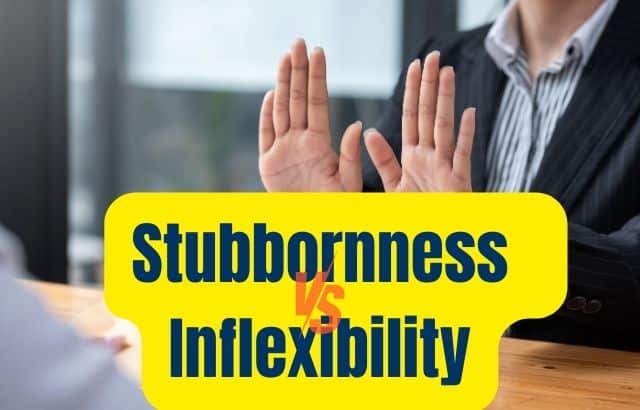In the fast-paced world of business, the ability to adapt and evolve is essential for success. However, there are times when a little bit of stubbornness can be a good thing. It can help us to stay focused on our goals and persevere through challenges. But when does stubbornness become inflexibility? And how can we tell the difference?
Table of Contents
The Power of Stubbornness
Stubbornness can be a powerful asset in business. It can help us to:
Stay focused on our goals: When we are determined to achieve something, we are more likely to put in the hard work and effort required to succeed.
Persevere through challenges: There will always be obstacles on the road to success. Stubbornness can help us to keep moving forward, even when things get tough.
Be innovative: Sometimes, the best solutions come from thinking outside the box. Stubbornness can help us to challenge the status quo and come up with new ideas.
The Dangers of Inflexibility
However, there is a fine line between stubbornness and inflexibility. When we become inflexible, we can:
Miss out on new opportunities: If we are too set in our ways, we may be blind to new trends or developments that could benefit our business.
Alienate our customers: If we are not willing to listen to feedback or adapt to their needs, we may lose their business.
Damage our relationships: Inflexibility can make it difficult to collaborate with others and build strong relationships.
So, how can we tell the difference between stubbornness and inflexibility?
Here are a few tips:
Be open to feedback: Even if you disagree with someone, be willing to listen to their perspective. You may learn something new.
Be willing to compromise: Sometimes, the best solution is a compromise that meets everyone’s needs.
Be adaptable: The business environment is constantly changing. Be willing to adapt your strategies and plans as needed.
Stubbornness vs. Inflexibility in Business: Examples
The line between determined perseverance and detrimental rigidity can be blurry in business. Let’s explore some real-world scenarios to understand the distinction:
Stubbornness that fueled success:
Steve Jobs and the iPhone: Despite initial skepticism, Jobs persisted with his vision for a touchscreen smartphone, revolutionizing the industry. This showcases staying focused on a goal and challenging the status quo.
Amazon’s early days: Jeff Bezos faced numerous doubts but remained stubbornly committed to his online bookstore concept, eventually expanding into the e-commerce powerhouse it is today. This highlights perseverance through challenges and innovation.
Inflexibility that hindered progress:
Blockbuster refusing to adapt to streaming: Despite facing the rise of Netflix and other streaming services, Blockbuster clung to its brick-and-mortar model, leading to its demise. This illustrates missing new opportunities due to inflexibility.
Nokia’s resistance to touchscreen technology: Nokia’s dominance in the mobile phone market crumbled as they ignored the shift towards touchscreen devices, refusing to adapt. This demonstrates alienating customers due to inflexibility.
Understanding the grey area:
Netflix’s password-sharing policy: Netflix initially defended its “no password sharing” policy, facing backlash from customers. They later adapted with a more nuanced approach, showing listening to feedback and being adaptable.
Tesla’s Autopilot controversy: Tesla has faced criticism for its self-driving technology, prompting them to improve safety features and communication. This reflects the need for balancing innovation with adapting to challenges.
Key takeaways:
- Stubbornness can be valuable when channeled towards clear goals and adapting to new information.
- Inflexibility becomes detrimental when it leads to missed opportunities, alienated customers, or hindered progress.
- The crucial factor is the ability to discern between staying true to your vision and recognizing the need for adaptation.
Remember, a healthy dose of stubbornness can drive success, but inflexibility can be a recipe for disaster. By recognizing the difference and remaining adaptable, businesses can navigate the ever-changing landscape and thrive.
In conclusion, stubbornness can be a valuable asset in business, but it is important to avoid becoming inflexible. By being open to feedback, willing to compromise, and adaptable, you can harness the power of stubbornness while avoiding its pitfalls.






















